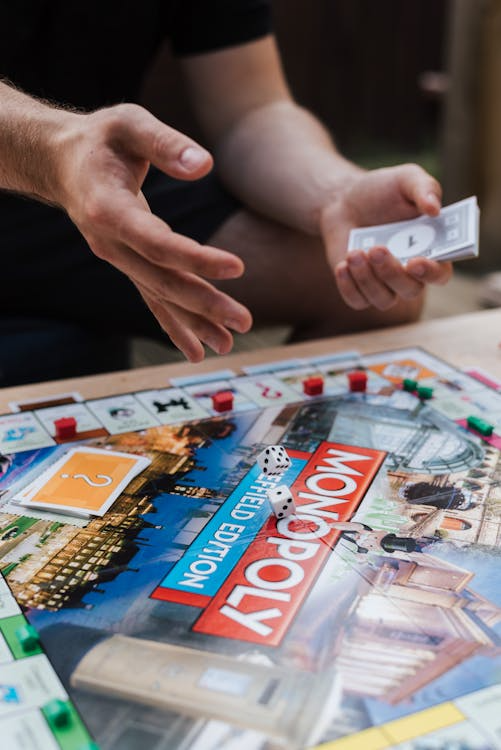How to Balance Cost, Quality, and Shipping When Producing Board Games in China
I once spent weeks worrying if my game would look cheap or arrive late.
The key to balancing cost, quality, and shipping in board game production is careful planning, clear communication with your manufacturer, and smart trade-offs. You cannot maximize all three at once, but you can achieve the right balance that matches your goals.
Making these choices is not easy. Many designers and publishers face the same challenge: keep costs low, deliver top quality, and ship on time. I will share what I have learned after years of working with game creators, and why it matters for your success.
Why cost, quality, and shipping pull in different directions
When you design a game, you want the best components. Thick cards, smooth dice, strong boards. At the same time, you need a price that fits your budget. And then there is shipping. Ocean freight, air freight, customs delays. Each factor affects the others. If you push one side too hard, the other two will suffer.
This is why the idea of a perfect solution does not exist. Instead, you must decide what matters most for your project. If you target mass retail, you may accept lower unit cost and simpler parts. If you plan a premium Kickstarter, you may choose higher quality and longer lead times.
I have seen both types of customers. One designer cared only about thick box walls and heavy coins. Another only asked for the lowest possible quote. Both made trade-offs, and both got results they were happy with.
Cost: what you can control and what you cannot
When I talk about cost with customers, I always explain that there are two parts: material cost and process cost. Material cost comes from paper, plastic, wood, and metal. Process cost comes from printing, cutting, assembly, and labor. You cannot control global prices of paper or shipping fuel. But you can make choices about game size, box design, and component count.
For example, one designer wanted 200 unique cards in their game. This raised the printing setup fee. I suggested splitting them into 100 unique cards and duplicating some. The gameplay stayed the same, but the printing cost dropped by 20%.
It is also smart to compare different finishes. Linen texture on cards feels nice, but it adds cost. Spot UV makes boxes stand out, but it needs extra passes in production. Ask yourself if each upgrade supports your brand or if it is just for fun.
The biggest lesson I learned is that cost is not only about the factory quote. It is also about what you can sell the game for. If you invest in quality where players notice, you may sell at a higher price and recover the cost.
Quality: why it is more than just materials
Many new designers think quality is only about thicker boards or shinier boxes. In truth, quality is about consistency. When you open 1,000 boxes, you want every single one to look the same. Corners aligned, colors accurate, inserts fitting.
I once worked with a publisher who had problems with color matching. Their first print run from another supplier had red pieces that looked orange under bright light. They lost trust from backers. When they came to me, they were scared it would happen again. We set up a color proof system and compared every print sheet. The result was a consistent color across 3,000 units.
Quality also means durability. A board game may sit on a shelf for years. When someone opens it five years later, the cards should still shuffle well. If the box lid warps, it feels cheap. If the dice paint fades, it feels careless. These things decide if players recommend your game.
From my side as a manufacturer, I push every customer to approve samples before mass production. Hold the cards, test the dice, check the box insert. It is the only way to confirm quality before thousands of units are made.
Shipping: how it can make or break your timeline
Shipping is the factor most designers underestimate. Production may take 6–10 weeks, but shipping can take just as long, sometimes longer. If you plan for a holiday release or a Kickstarter delivery date, you must count in shipping from the start.
I remember a client who finished production in September. They thought the games would arrive in the U.S. before Christmas. But they booked sea freight too late. The container got delayed at port, and the games only arrived in January. They lost the holiday sales window.
The choice between air and sea is often about budget. Air is fast but expensive. Sea is cheaper but slower. Sometimes a mix works best. One publisher shipped 100 copies by air for reviewers and influencers, while the rest went by sea for retail. It cost more but built early buzz.
Another thing to plan for is customs clearance. Each country has its own rules, taxes, and paperwork. If you do not prepare documents correctly, your shipment may sit at port for weeks. A good logistics partner saves you from this risk.
Finding the right balance for your project
So how do you bring cost, quality, and shipping together? It starts with clear priorities. Ask yourself three questions:
-
What is my target price for customers?
-
What level of quality matches my brand?
-
What is my delivery deadline?
Once you answer these, you can share them with your manufacturer. A good partner will help you adjust. If your budget is tight, they will suggest material changes. If your deadline is close, they will guide you to faster shipping. If your brand needs premium parts, they will focus on strict quality checks.
In my experience, the best projects are the ones where designers stay flexible. They accept that every decision has a trade-off. They choose the balance that fits their audience and goals, not the perfect dream.
Conclusion
Balancing cost, quality, and shipping in board game production is not about finding one perfect solution. It is about making smart choices and planning early. As someone who has worked with many creators, I have seen that success comes when you understand the trade-offs and manage them well. If you go in with clear goals, good communication, and trust in your partner, you can create a game that players love and a product that makes business sense.


